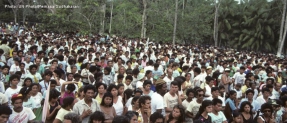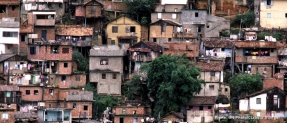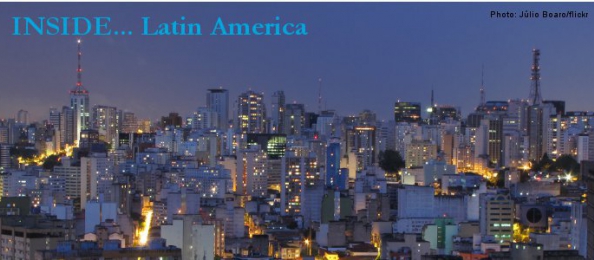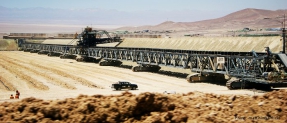Introduction
CSR in Latin America: A General View
By Estrella Peinado-Vara (Inter-American Development Bank)It is difficult to generalize when examining companies’ social and environmental responsibility situations in Latin America, largely due to the economic, social, and cultural differences in the region. Mexico, Central America, the Caribbean, the Andean region, and Southern Cone share many similarities but are separated by many differences. In addition, similarities and differences also occur within the countries.
more[...] ![]()
An Evolving CSR System in Latin America
By Prof. Paul Alexander Haslam (University of Ottawa)A decade ago, corporate social responsibility had only just emerged on the agendas of businesses operating in Latin America. Corporate commitments were limited to the largest firms, usually the multinationals; public awareness and demand for corporate responsibility was low; governments were uninvolved; and civil society organizations promoting CSR were still new and, for the most part, funded from elsewhere.
more[...] ![]()
Management
-
The UN Global Compact in Latin America – Trends and Topics
Labor standards, human rights, environmental conservation, and transparency – the core issues of the United Nations Global Compact are especially vital in the developing economies. Latin America and the Caribbean are remarkable examples. “El Pacto Mundial en América Latina y el Caribe. Memorias 2011: Informe de Gestión,” a publication of the Global Compact Regional Center, gives a detailed view on the present situation of the Global Compact in Latin America and the Caribbean. more[...]
 The Author
The Author
-
Social Responsibility Networks in the Banana Industry
Prof. Maria Alejandra Gonzalez-Perez, Universidad EAFITThere is evidence that in the last two decades, international civil society has played a dynamic role in improving environmental and working conditions in regions such as Latin America. Such improvements have occurred side by side with indications that trade liberalization and the decline of the state’s regulatory role since the 1980s and the advent of globalization in the 1990s has exacerbated inequalities, social exclusion, and triggered environmental degradation. more[...]
 The Author
The Author
-
TeliaSonera partners with the Danish Institute for Human Rights (DIHR)
Telia SoneraTeliaSonera has engaged the Danish Institute for Human Rights to support and review its human rights impact assessment. DIHR will develop a tool tailored to TeliaSonera and its human rights risk profile. It will include freedom of expression and privacy issues and be benchmarked on the United Nations Guiding Principles on Business and Human Rights. DIHR will also assess TeliaSonera’s consequential mitigation plan. more[...]
 The Author
The Author
Human Rights

The Prohibition of Amnesties by the Inter-American Court of Human Rights
By Prof. Christina Binder (University of Vienna)The Inter‐American Court of Human Rights has proven a particularly active defender of human rights in Latin America. The Court has developed an innovative and creative jurisprudence with respect to all kinds of human rights violations, including forced disappearances, extrajudicial killings, violations of indigenous peoples’ rights or those of undocumented migrants. Legal scholars have praised the Inter‐American Court for its effective protection of human rights and even the International Court of Justice has drawn on the judgments of the Inter‐American Court.
more[...] ![]()

Corporate Complicity in Human Rights Abuses in Latin America
By Dr. Marcelo Saguier (School of Latin American Social Sciences )Efforts to establish an agenda of corporate responsibilities with human rights in Latin America have led to modest, if not aspirational, results. However, recent developments suggest that this agenda is gradually gaining ground, as seen through its appropriation by states, companies, and civil society advocacy groups as an interpretative framework for their actions. The emerging dynamics of collaboration and conflict between such actors – within and across national borders – contribute toward defining the broad substance and scope of this emerging agenda.
more[...] ![]()

Should Poverty Alleviation Be Part of Corporate Responsibility?
By Dr. Lourdes Casanova (Strategy Department INSEAD)After a gap of 20 years, Rio de Janeiro will again be hosting the United Nations Conference on Sustainable Development, also known as Rio+20. In 1992, at the Earth Summit (Eco-92), Latin America was getting out of the so-called lost decade, following the debt crisis of the 1980s. The economy was growing slowly, inflation was high, and high levels of external debt reduced investments in infrastructure. Over the last 20 years, Brazil has become the sixth largest economy in the world.
more[...] ![]()
Mining and Human Rights Violations in Argentina
Many communities have mobilized in opposition to prevailing mining models in Argentina this year. The use of road blocks to obstruct exportation of goods has been one popular tactic. However, these demonstrations have often been suppressed by police force. On several occasions the residents and activists have been beaten, abused and detained by the police with the approval (tacit or not) of provincial and national authorities. The development of these mining projects has already interfered with people's fundamental right to water and their constitutional right to a healthy environment. There are growing concerns that individual political freedoms are also in danger.
more[...] ![]()
Environment
-
From drought to flooding: understanding the abrupt 2010–11 hydrological annual cycle in the Amazonas River and tributaries
Jhan Carlo Espinoza, Peruvian Geophysical Instituten this work the authors documents and analyze the hydrological annual cycles characterized by a rapid transition between low and high flows in the Amazonas River (Peruvian Amazon) and they shows how these events, which may impact vulnerable riverside residents, are related to regional climate variability. Their analysis is based on comprehensive discharge, rainfall and average suspended sediment data sets. Particular attention is paid to the 2010–11 hydrological year, when an unprecedented abrupt transition from the extreme September 2010 drought (8300 m3 s-1/ to one of the four highest discharges in April 2011 (49 500 m3 s-1/ was recorded at Tamshiyacu (Amazonas River). more[...]
 The Author
The Author
-
The Importance of Protecting the Rainforest in South America
Dennis LohmannThe Amazon basin gives South America the largest contiguous block of rainforest in the world: it extends over an area of almost seven million square kilometers and is one of the largest natural carbon sinks on the planet. Experts from the World Wide Fund for Nature (WWF) estimate that over the last 50 years, nearly 20% of the rainforest has been destroyed through logging, natural catastrophes, and industrial exploitation. Any relaxation in forestry legislation could accelerate species extinction in Brazil even further. more[...]
 The Author
The Author
-
Sustainable Forest Management and Carbon in Tropical Latin America: The Case for REDD+
Dr. Robert Nasi, Consultative Group on International Agricultural Research (CGIAR)Tropical forests are threatened by the distinctly different processes of deforestation and forest degradation. While deforestation involves the conversion of forests to another land use type, degradation results in forests that have lost some of their ability to provide environmental goods and services. In economic terms, deforestation tends to be associated with investments in other land uses, mainly agriculture, whereas degradation tends to be linked to short-term extraction of forest rents or wildfires. Forest degradation translates into losses of biodiversity, reduced capacity of forests to provide the full spectrum of goods and services, enhanced likelihoods of subsequent deforestation, and reduced resilience and adaptation potential to climate change. more[...]
 The Author
The Author
| Title | Region | Initiator | Related tags |
|---|---|---|---|
| Social Media for Social Change | Panama | medcom | Social Media |
| Central Romana and Corporate Social Responsibility | Dominican Republic | Central Romana Corporation | Central Romana Corporation |
| Participatory Communication with Employees | Peru | Copeinca | Corporate Governance |
| Bradesco Invests in Mobility Through Its Digital Channels | Brazil | Banco Bradesco S.A. | Financial Market |
| ACCIONA Exports Sustainability | Latin America | Acciona | Sustainability |
About Us // Privacy Policy // Copyright Information // Legal Disclaimer // Contact
Copyright © 2012-2018 macondo publishing GmbH. All rights reserved.
The CSR Academy is an independent learning platform of the macondo publishing group.









